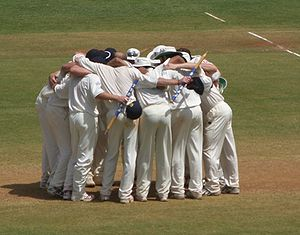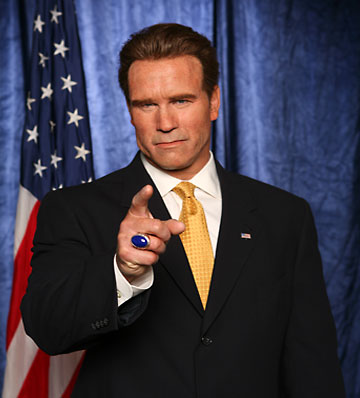Last blog we discussed the importance of meetings fitting together. Your meetings should cascade or telescope from the first meeting of the year which should be your annual planning meeting. This should be about 2 – 3 days depending upon what you need to discuss, how complex the challenges are that the organizations faces, and when you last did a proper planning and strategy session.
Strategic Discipline Blog
Topics: weekly meetings, Annual Plan, meeting rhythms, metrics, meetings, key performance indicators
Last blog I promised more on essential meetings. This blog is on Daily Huddles and subsequent blogs will review the agenda, intention and value of our recommended meeting rhythms.
Topics: Strategic Discipline, meeting rhythms, Mastering the Rockefeller Habits, meetings, daily huddle
Do you wonder why your people are so frequently unaccountable to the results you expect? How often are you asking them to be accountable to your expectations?
Topics: Accountability, weekly meetings, Strategic Discipline, meeting rhythms, meetings, daily huddle
Topics: Good to Great, Strategic Discipline, meeting rhythms, Topgrading
Casey Anthony’s Verdict Lesson for Strategic Discipline
Posted by Douglas A Wick on Fri, Jul 8, 2011
Count me as naive or possibly someone who didn’t follow the Casey Anthony case close enough to be surprised by the verdict. Just so you don’t think I’m totally out of touch I was stunned by the verdict in the OJ Simpson trial.
The Casey Anthony verdict should remind you how frequently there can be a disconnect between your communication with your staff and the intended response and reception. In a jury trial you are never aware of how the jury is responding. The attorneys on either side are unable to question or receive feedback from the jury unless the jury specifically requests it. Even then there is no direct back and forth communication with the jury. How do you know how your employees understand your expressed communication unless you observe their response and ask for feedback?
Strategic Discipline requires meetings that provide customer and employee feedback. The intention in these meetings is that the executive team is observing, listening and sensing the way employees are working and responding in the work environment. These observations are to be reported on a weekly basis. There should never be any surprises when this type of employee feedback is consistently provided.
If you were surprised by the Casey Anthony Verdict, asks yourself how well you feel your communication is working in your business. Review the questions asked in Employee Engagement: Answer These Employee Questions? How well are you answering these important employee questions? Do your employees know your top priorities for the year, the quarter? Can your executive team write your strategy in one statement, let alone your staff?
Topics: Employee Feedback, Strategic Discipline, meeting rhythms
In Leadership’s Mission we discussed the critical need to satisfy spiritual resources first in building your business. Win the hearts and minds of your employees and then the right strategy pays dividends. The question becomes, how do you accomplish this and exactly what questions do my employees have that I need to satisfy.
Topics: Strategic Discipline, Core Values, Core Purpose, meeting rhythms, Strategic Learning
Topics: Discipline, Customer Feedback, Strategic Discipline, meeting rhythms, priorities, metrics, The Compound Effect
Due to changing technology, economic pressures, and evolving demographics, Multipliers’’ Co-Author Greg McKeown sees significant changes ahead for business in their organizational strategy and management of employees. We outlined some of these in the previous two blogs, manager’s role defined and Change Ahead.
Topics: collective intelligence, Strategic Discipline, change, meeting rhythms, Multipliers, pattern recognition
One of my clients reminded me this week of an important leadership lesson. Quit answering your subordinate’s questions. I’ve blogged on this before The Problem with being the Chief Problem Solver, yet it bears repeating. My client had one of his managers ask him “what should I do?” Many leaders and managers would immediately provide an answer. It’s fast, painless, and allows you to move on to your own issues. Yet what does that teach? What’s more what does it continue to do?
Topics: Discipline, leadership, meeting rhythms, questions
A singular focus [One Thing] can have a profound effect on your business. In April of last year one of my clients [name withheld to protect business secrets] had Positioning Systems come to his office in California to conduct our Two Day Rockefeller Habits Workshop. At the time their business was lagging 7% behind the previous year and struggling to get traction. Among the many ideas and actions that had an immediate impact was to go through the Strength Based Leadership Test and identify where his executive talents were. At the time the business was struggling to execute in the field and we identified several of the executive that had execution themes, reassigned them to positions were they could have the greatest affect and influence on the business. We reassigned others based on their top themes and the results were almost immediate and dramatic. By year end they turned their 7% decline into a 15% gain for the year.
Topics: Strategic Discipline, One Thing, meeting rhythms, priorities, metrics, Two Day Rockefeller Habits Workshop, Strength Based Leadership






-resized-600.jpg)









.jpeg?width=150&height=135&name=Hand%20with%20marker%20writing%20the%20question%20Whats%20Next_%20(1).jpeg)

